If you’ve ever seen a cat gleefully knock over a potted plant on a windowsill, you know that kitties tend to be pretty curious when it comes to things that grow (well, and everything else). Unfortunately, many common houseplants and flowers can be poisonous to cats, so if you’re a feline lover with a green thumb, it’s important to make sure what you’re growing is safe for cats. Luckily, there are plenty of plants and flowers that are perfectly safe for your pet.
“I’m a devoted plant enthusiast, with numerous plants both indoors and in my yard,” says New Orleans-based veterinarian Dr. Kevin Puzycki, who’s also the spokesperson for Solid Gold pet food. “To ensure the safety of my cats, I always consult comprehensive lists, like the one provided by the ASPCA, which categorizes plants as either toxic or nontoxic to cats.”
Not only are there plenty of nontoxic options, but certain plants can even be beneficial to your cat, according to veterinarian Dr. Sara Ochoa of Louisiana City, Missouri, co-founder of How to Pets.
“Some of them have air-purifying abilities that can benefit humans and cats by improving indoor air quality like areca palm and Boston ferns,” says Ochoa. “These plants can contribute to a more humid indoor environment, which could potentially be beneficial, especially in drier climates.” Others, like spider plants, can provide stimulation and entertainment for your pet, as Ochoa explains cats are often attracted to their long leaves.
The following plants and flowers are considered to be safe for cats to be around, so feel free to add them to your home or garden.
Common cat-friendly plants
1. Boston ferns
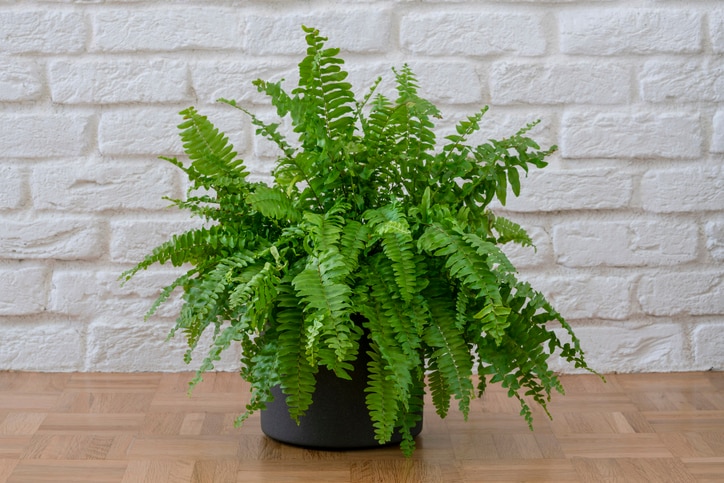
“Ferns can be a tricky bunch because some are toxic to cats,” says Ochoa. “However, Boston ferns are a safe option. They’re relatively easy to care for and add a touch of greenery to your interiors.”
2. Bromeliads
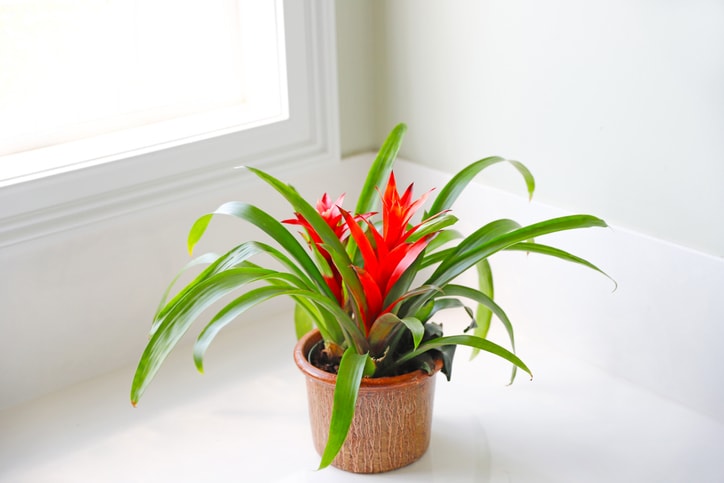
Also known by the names crimson cup, marbled fingernail, blushing bromeliad, ossifragi vase, miniature marble plant and aregelia, this red and green plant is nontoxic to cats.
3. Swedish ivy
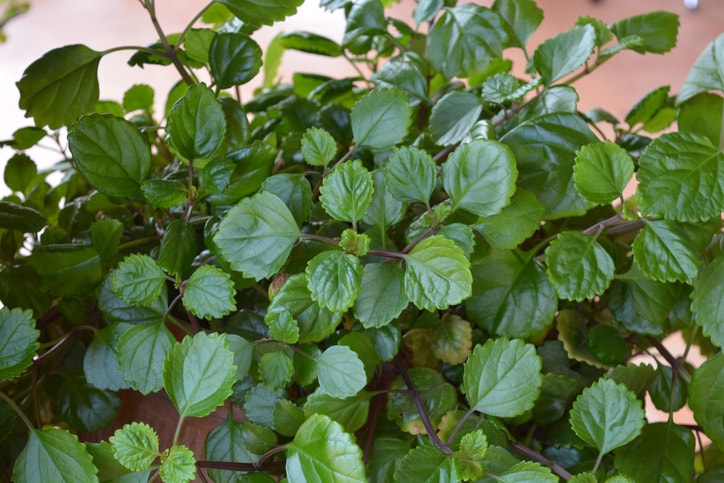
“This fast-growing, easy-to-maintain indoor plant is entirely cat-safe,” says Ochoa. “Swedish ivy is sure to brighten up your home with its cascading green leaves.”
4. Areca palm
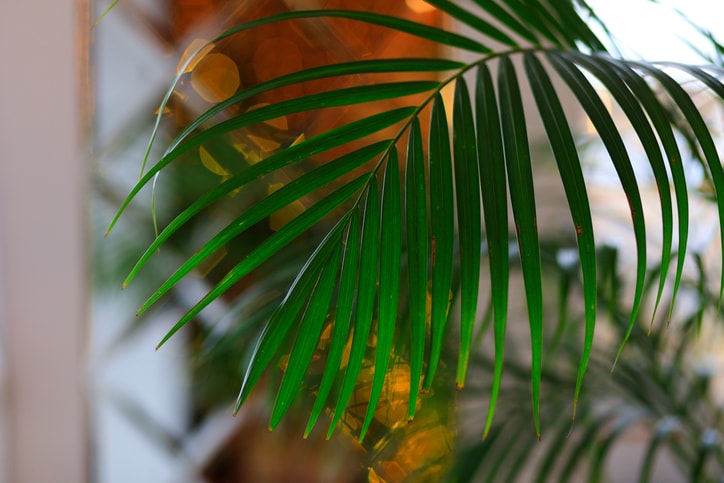
“Add a tropical feel to your home with the areca palm,” says Ochoa. “This appealing houseplant is not only safe for cats but also effective in purifying the air.”
5. Bamboo
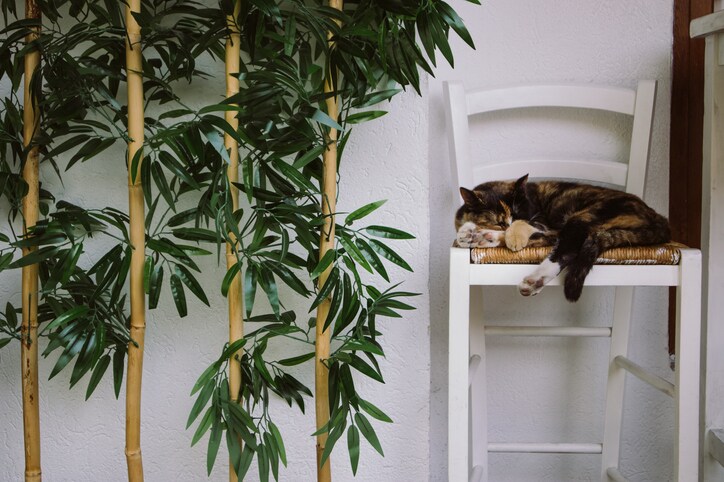
Popular as both an indoor and outdoor plant, bamboo is often used as a landscaping tool. Luckily, it’s not toxic to cats.
6. Calathea
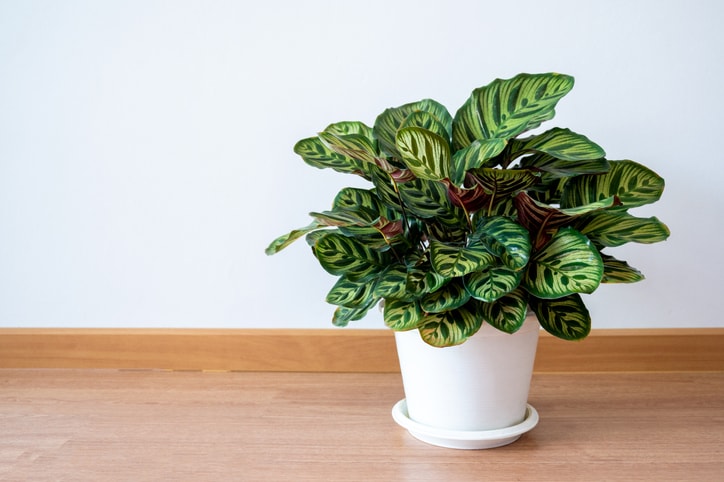
This plant is known for the beautiful pattern on its leaves. It won’t hurt your cat.
7. Polka-dot plant
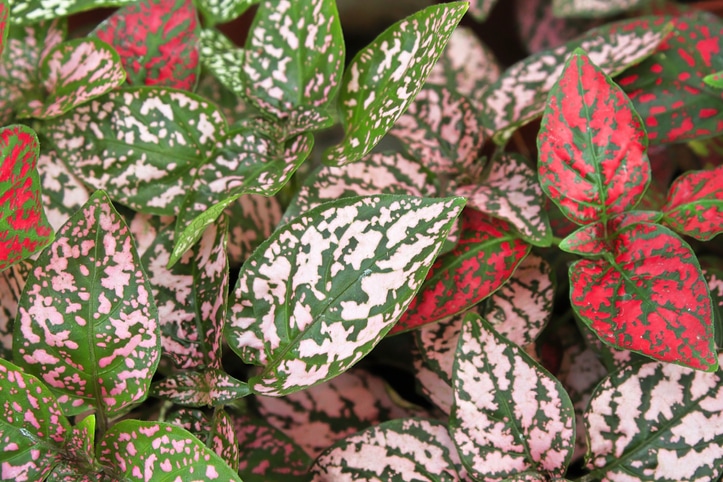
Another plant with eye-catching, colorful leaves, the polka dot plant makes any room cheerful and is safe for cats.
8. Spider plants
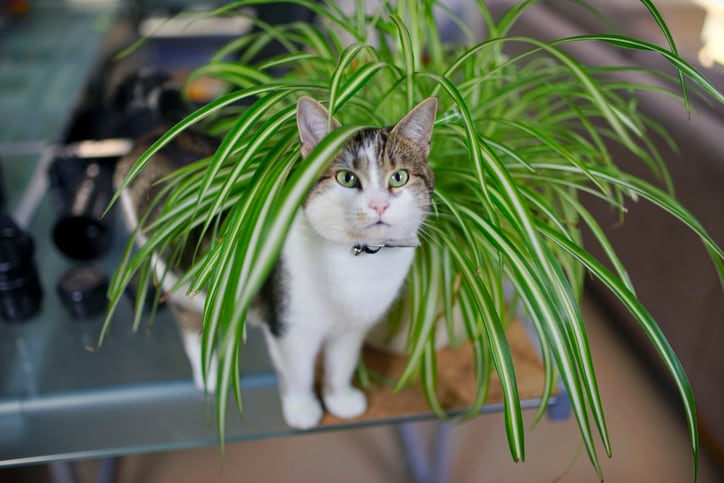
“Almost impossible to kill, spider plants are nontoxic to cats and dogs alike,” says Ochoa. “They are excellent indoor plants and safe for your pets if they munch on them.”
Common cat-safe flowers
1. Roses
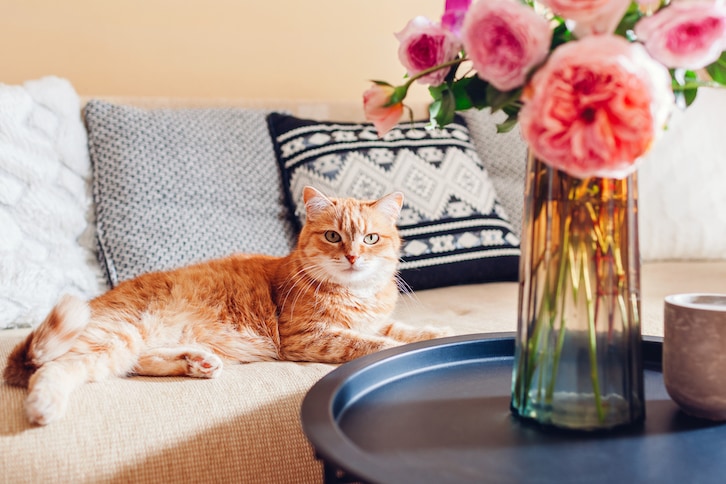
“Although thorned types might pose a minor physical risk, roses are non-toxic to cats,” says Ochoa. “They come in a wide variety of colors, perfect for adding elegance and a sweet scent to your home.”
2. African violets
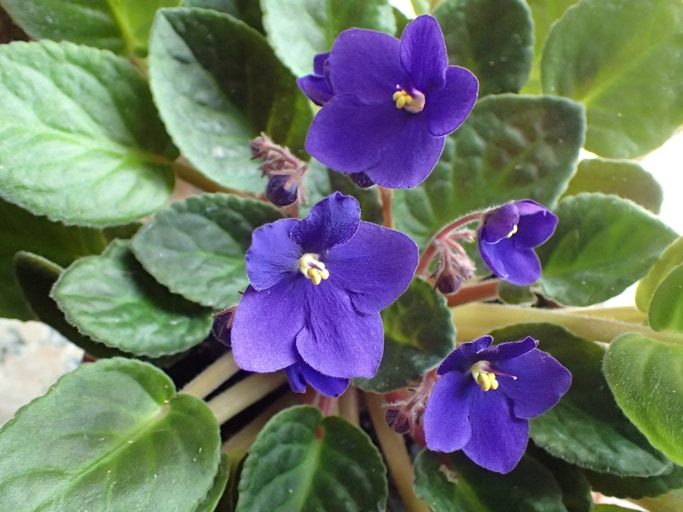
Popular as a houseplant because of its pretty purple flowers, African violets (also known as cape marigold) are safe for cats.
3. Sunflowers
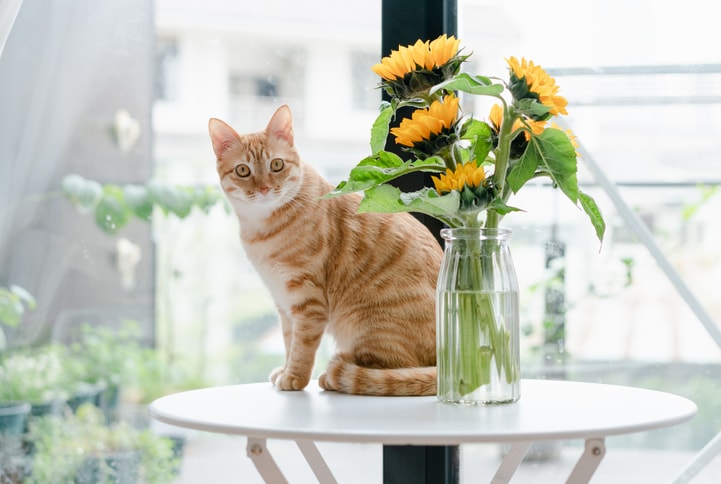
“Sunflowers have no substances harmful to cats,” says Ochoa. “All parts of the plant, from the stalk to the petal, are safe. Plus, they add a cheerful touch to any setting.”
4. Zinnias
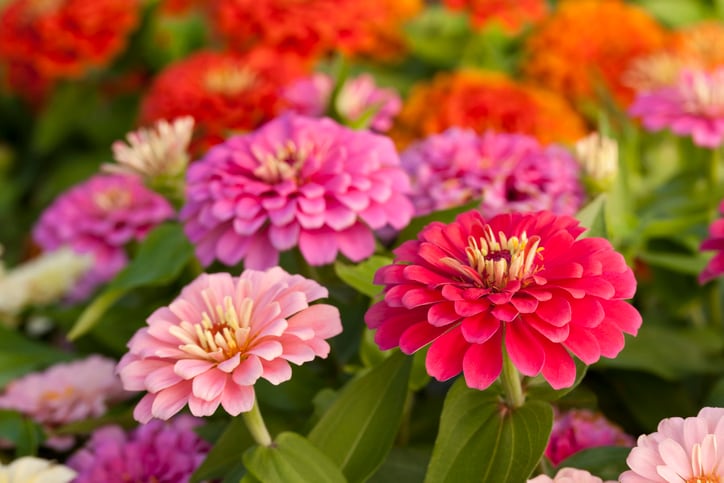
An outdoor flower that comes in a variety of hues, zinnias are nontoxic to cats.
5. Gerber daisies
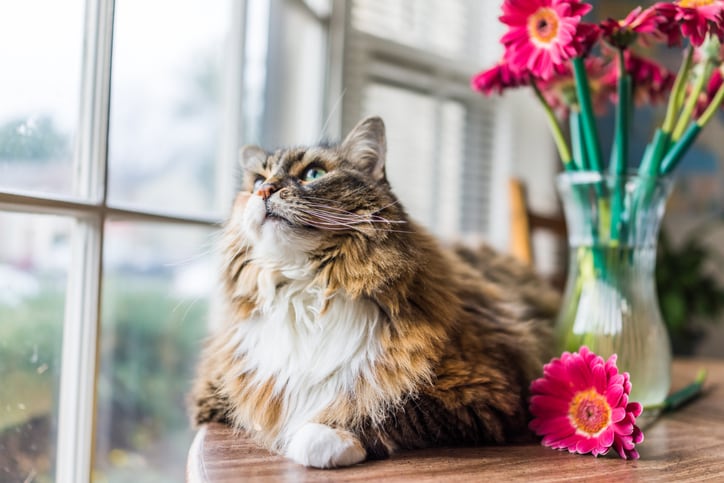
“Known for their bright and large array of colors, gerber daisies are safe for feline friends,” says Ochoa. “They bring a pop of color to any indoor setting.”
6. Marigolds
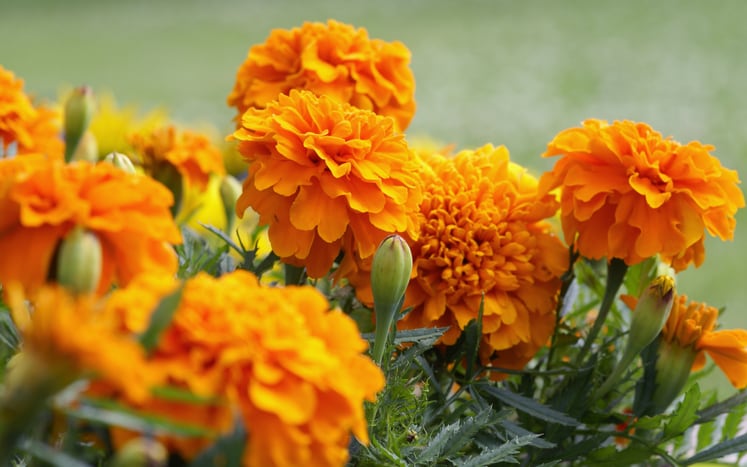
“These vibrant, sunny blooms are nontoxic to cats,” says Ochoa. “Not only do marigolds look beautiful, but they also offer pest-controlling properties.”
7. Impatiens
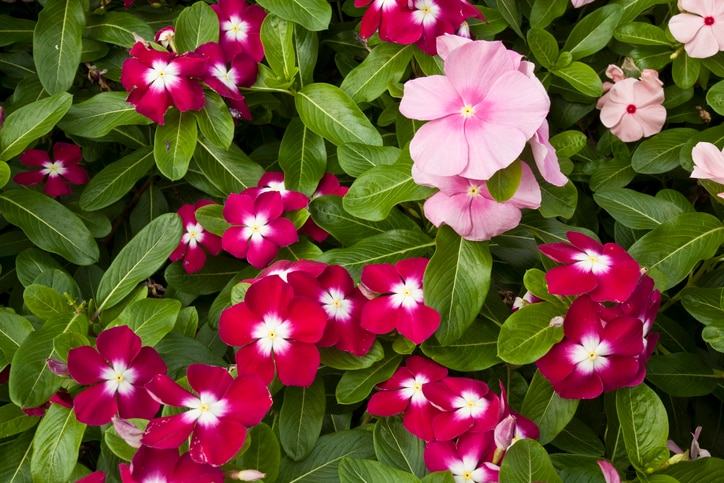
“Looking for flowers to fill your shade garden? Impatiens are beautiful, safe for your feline and love the shade,” says Ochoa.
8. Orchids
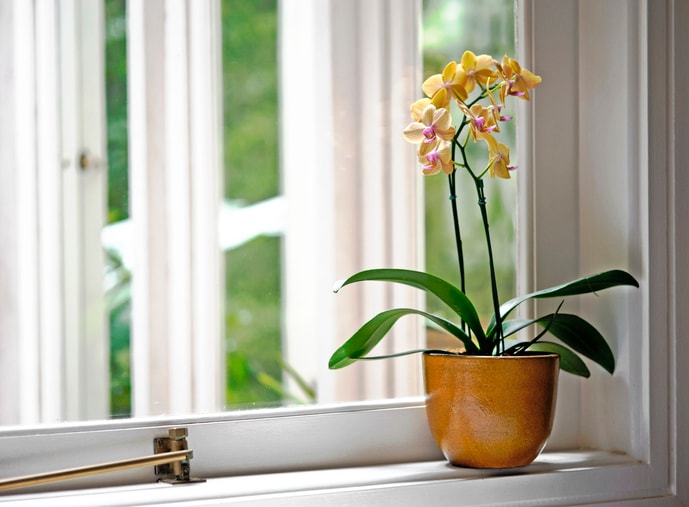
Exotic and lovely, orchids come in many colors and are nontoxic to cats.
How to introduce cat-safe plants or flowers to your pet’s environment
“Creating a cat-friendly garden or figuring out where to place plants indoors doesn’t have to be a hassle,” says Ochoa. “It’s all about knowing your loving pet’s behavior and planning appropriately.” In addition to making sure that the plants you choose are safe for felines, Ochoa gives the following suggestions:
- Opt for grass: Cats love to eat grass, so plant some in your garden to give them something safe to nibble on.
- Secure planters: Mischievous cats often tip planters over, so it’s essential to make sure they’re well-anchored.
- Create elevated places: “Cats love climbing,” says Ochoa. “Consider having taller trees or structures where cats can perch high without harming your plants.”
- Provide entertainment: To take your cat’s focus off the plants, try setting up a bird feeder or bath to give them something to watch.
- Create safe chewing stations: Make designated areas with plants that are safe for your cat to chew in order to keep them away from potentially harmful plants.
- Place plants wisely indoors: Keep plants out of your cat’s reach by placing them on high shelves or hanging them from the ceiling.
- Get creative with barriers: Decorative fences, cages or even a terrarium can stop your cat from accessing plants.
When and how should catnip be used?
You’ll find cat toys filled with catnip, which is actually a plant in the mint family, up and down the pet store aisles. Kitties dig it, but is it safe? And how much is too much?
“Owners can utilize catnip to enrich their cat’s daily life and reduce boredom,” says Puzycki. “Catnip is generally safe for cats, but it’s essential to avoid overuse because frequent exposure can lead to desensitization to its effects. A reasonable guideline is to use catnip on a weekly basis, but it’s advisable not to exceed 1-2 times a week.”
Ochoa agrees that “less is more” when it comes to catnip, noting that too much can cause an upset stomach. “Remember, moderation is key,” Ochoa continues. “Use catnip as a supplemental tool to help enrich your cat’s life and not as the primary source of their entertainment or comfort. Catnip can certainly be incorporated into your cat’s daily play routine, but it should not be overused as it can lose its effectiveness over time.”
What should you do if your cat ingests a new plant?
“Any type of plant or leaf, even if nontoxic to cats, can still cause gastrointestinal upset, such as loose stool, diarrhea or vomiting if ingested,” says Puzycki. If your cat exhibits any of these symptoms after eating a cat-safe plant or flower, call your vet to be safe.
Who do you call if your cat shows symptoms of poisoning?
“If your pet ingests a toxic plant or flower, it’s essential to take immediate action by contacting both Animal Poison Control and your veterinarian,” says Puzycki. “Animal Poison Control employs trained professionals who have expertise in handling various toxin ingestions and can provide tailored treatment recommendations based on the specific toxin involved.”
24/7 Pet Poison Control
- ASPCA Animal Poison Control Center (APCC): 888-426-4435
- Pet Poison Helpline: 855-764-7661
Depending on the plant your cat ingested and their symptoms, the vet might induce vomiting, administer activated charcoal, IV fluids and/or other medications, says Puzycki.
Hopefully, all your efforts to keep your cat away from dangerous plants will prevent a potential poisoning incident. It might take some effort, but your pet’s health is worth it!
